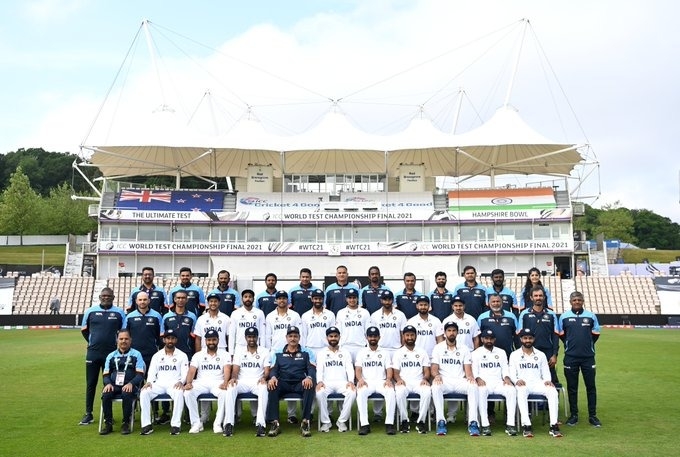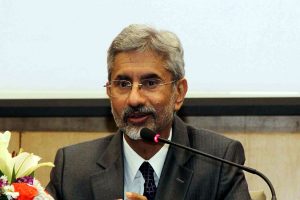The cricketing world has been waiting with baited breath for the start of the maiden World Test Championship final on June 18. There have been reams of written and plenty of verbal analysis done on both the Indian and New Zealand teams. The pluses and minuses are in plentiful. However, the team that displays better mental strength on the day will be the winner. A Test match for teams is strategised through sessions whereas for an individual the target is much smaller.
Ajinkya Rahane puts it brilliantly by saying that he plays through every five minutes when he is batting. Every player focusses differently in order to succeed. The importance of run rate and strike rate takes a back seat. Test cricket is a true battle between the bat and the ball and the skills of the bowler versus the batsman. The smaller battles that ensue between players during the five gruelling days is what makes Test cricket exciting to watch. These tussles are what finally win a team the war.
Advertisement
New Zealand’s recent series win against England has put them ahead on the scale as favourites. However, the aura that a final match entails has no certain gains or advantage for any side. The famous line in a song sung by Whitney Houston “one moment in time” is what every cricketer involved would be dreaming of achieving in his or her respective goals.
Cricket at the present time has evolved from being a simple, straight forward encounter between two teams. Technology, research, and planning have become important factors. Analysing every aspect of the game with many layers of data on players and team performances in the past has become the base of how the coaches and support staff plan their strategies.
The India versus New Zealand final will be a technology spin. Each team has had plenty of time to study each other’s players thoroughly. The core players from both the sides are known. The only change that may arise depends on the weather conditions on the morning of the match. A hot sunny start would have a spinner, whereas, a wet cloudy morning an additional seamer. And, as it actually happened, and the first session of play was washed out on Friday.
The weather in England is always a major influencer in a game of cricket. Southampton, the venue of the match, has created a typical situation that will have both sides in a quandary. The weather has been exceptionally hot the past few days. However, the weather for the match has been forecast as rainy and cloudy conditions on most of the days. The covers on the wicket does tend to make the wicket drier but a bout of heavy rain could make all the difference.
England in the recent series against New Zealand erred in not including a genuine spinner and this did cost them dearly. India have two front-line spinners in Ravichandran Ashwin and Ravindra Jadeja, the two ‘Ravi’s’, and one hopes they play both of them. The duo is also handy with the bat and if India go in with a four-pronged pace attack, their batting will suffer as none of the four pace bowlers are dependable batsmen.
This could become a major issue if India loses a few early wickets. New Zealand batsmen have in the past struggled against good spin bowling and, therefore, spin is the best way forward. The Kiwis tend to play the seam bowlers more comfortably as the conditions in New Zealand are very similar to what one encounters in England. The batsmen play the ball late and are much better than the players from the Asian continent in leaving the ball outside the off stump.
The computer analysts from both sides accompanying them would have scrutinised every innings or ball bowled or faced by every player expected to play and therefore technology will play a major part in the match. Seeing strategies being enforced by both the Indian and New Zealand sides will be the most interesting aspect of the finals. The issue that may arise, however, is in the implementation as cricket has always brought a hint of uncertainty and this is more so in the unpredictable weather of England.
The majority of the players from both India and New Zealand have been exposed to and experienced the playing conditions in England but one still needs time to adjust and feel comfortable in order to do so. The Indian batting comprises some exceptional stroke-players in Rohit Sharma, Shubman Gill, Virat Kohli and Rishabh Pant.
However, they will need to choose the right delivery to do so as the ball tends to deviate off the wicket, at times. Patience is a very important factor in order to succeed for both the batsmen and the bowlers. The conditions can in a session change drastically to favour anyone of them and exploiting it when it matters will be essential for a team’s progress.
Close-in catching will play a most significant part in the outcome of the match. “Catches win matches” may be a cliche. However, it will hold the key to this encounter. New Zealand, having played two Test matches recently, have shown that they are a good close catching and fielding side. The Indian slip fielders will need to adapt and adjust quickly to the conditions to do well .
The month of June has favoured India in England in the past. On the June 25 in 1983 India won the One-day International World Cup.
Billions of good wishes and blessings, sunshine and lady-luck are what India requires. India does boast of having a superior back-end technology. This one feels will favour India to win through a technical knock-out.











